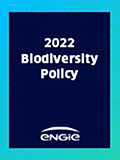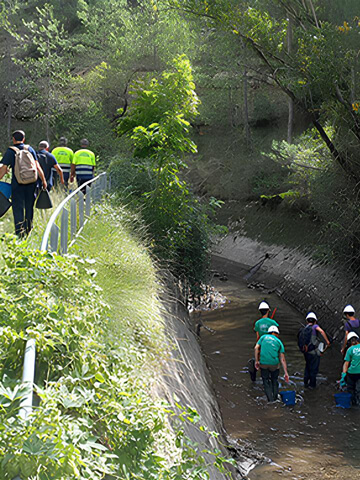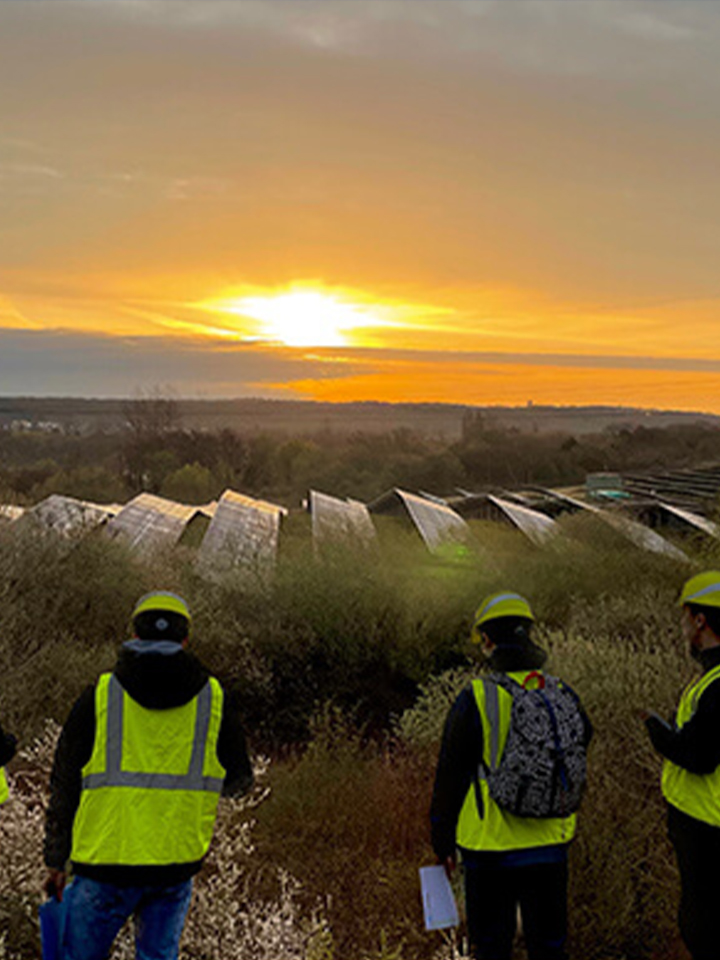Chronology of the Group's commitments to preserve biodiversity:
- 2010: Launch of the Group’s biodiversity guidelines
- 2012: Commitments in the French national strategy for biodiversity supported by the Ministry of Ecological Transition

- 2016: Commitment in the Business and Biodiversity Pledge, initiated by the Secretariat of the Convention on Biological Diversity (CBD) during the COP13 in Cancun, Mexico.

- 2018: Commitment in act4nature, an initiative launched by Entreprise pour l’Environnement (EpE) to mobilize companies to biodiversity issues. The 2021 statement of those commitments is now available.

- 2019: Commitment to UNESCO World Heritage sites, and more specifically to natural and mixed sites.

- 2021: Commitment in act4nature international (evolution of act4nature), for the Group's global commitments and in Entreprises Engagées pour la Nature-act4nature France (the rest of the commitments in the French national strategy for biodiversity)

- 2023 : Renewal of the commitments in act4nature international
ENGIE renews and broadens its commitments by defining a new roadmap 2020-2030, based on the main pressures defined by IPBES (Intergovernmental Science-Policy Platform on Biodiversity and Ecosystem Services), the SDG (Sustainable Development Goals), act4nature common commitments and the challenges specific to the Group’s activities. These commitments are designed according to 4 axes:
>> ENGIE’s individual commitments to act4nature international <<
The Group's commitments are organized around 4 key areas related to the major pressures on biodiversity.
Axis 1 – Land footprint and ecological continuities
Through its various sites, ENGIE can contribute to the preservation of biodiversity by optimizing the use of its land footprint, restoring ecological corridors and reducing the presence of invasive alien species.
In 2010, the Group fixed the goal of implementing a targeted action plan on all its priority sites in Europe by 2015. For the period 2016-2020, this objective has been integrated into the internal objective of integrated and concerted environmental management.
For the period 2020-2030, ENGIE has stepped up its commitments to identify priority sites for biodiversity and has set an ecological management objective for all its industrial sites.
Ecological site management
For all of the Group’s industrial activities, ENGIE is committed to implementing ecological management on its sites, which means, at a minimum, no use of phytosanitary products and differentiated management of green spaces.
>> Guidance on ecological management of sites <<
| Objectives | 2023 Progress report |
- 2025 : 50% of sites
- 2030 : 100% of sites
| As of the end of 2023, 58% of industrial sites are maintained without phytosanitary products and in compliance with local biodiversity programs. |
Solar parks and pollinators in the US
Since 2016, ENGIE NorthAmerica has incorporated revegetation as a standard element in the design of solar parks, using mixtures of grasses and flowering plants that grow naturally in the area, providing a pollinator-friendly ecosystem. These natural habitats protect the pollinator food chain. Flowers provide nectar for insects, birds eat seeds and insects, and plant stems and undergrowth ensure nesting and safety for all.
Today, 58 distributed solar sites, representing 890 acres of plantation (~360 hectares), benefit from this good practice.
In addition to the positive effects on biodiversity, creating a dynamic ecosystem, the deep roots prevent soil erosion and degradation, and absorb more water. Site maintenance is reduced for the duration of the project.
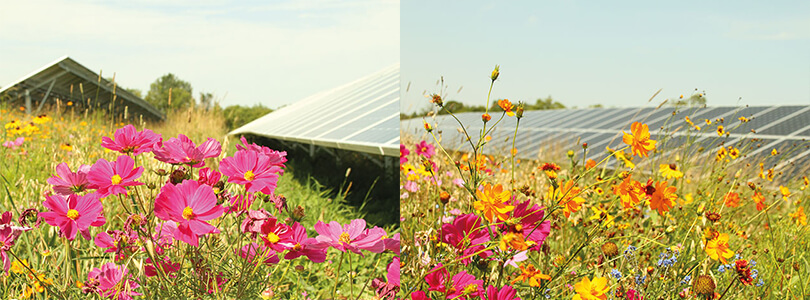
ENGIE is collaborating with BeeOdiversity and a local beekeeper to carry out a two-year study on the Sun Valley solar park (150 MW) in Texas, which prioritizes the planting of pollinator-friendly plant species: high-quality plants on 200 acres of land (~80 hectares) in its buffer zone, and low-growth plants within the site. The study involves collecting small quantities of pollen and analyzing them, using techniques based on environmental DNA, to identify the plant species in the area and detect the presence of chemicals. The aim of the study is to gain a better understanding of the types of plants present, to assess the diversity of the ecosystem and the success of the plantations. In addition, chemical analysis will determine whether bees are exposed to agricultural chemicals from the surrounding area.

>> Biodiversity as a solution | BeeOdiversity <<
Action plans for priority sites
A priority site is defined as a site located in or near a biodiversity sensitive area (IUCN Categories I-VI, UNESCO Natural and Mixed, RAMSAR, MAB, KBA, Natura 2000). A site identified as a priority must establish an appropriate action plan, in consultation with stakeholders.
| Objectives | 2023 Progress report |
- 2025 : 80% of priority sites with action plans established in consultation with stakeholders
- 2028 : 100% of priority sites with action plans established in consultation with stakeholders
| 62% of action plans deployed by the end of 2023 |
Wind farm and Agroforestry to act in favor of biodiversity
The ENGIE Green wind farm in Mont de la Grévière, France, is identified as a priority site because of its proximity to a Natura 2000 protected area. In order to offset the loss of habitat for agricultural plain avifauna linked to the establishment of the wind farm, in 2016 ENGIE Green supported the planting of agroforestry trees on 18 hectares of Ardennes agricultural plots.
This co-development (agroforestry and wind power) is beneficial for the soil and biological diversity, but also for the agricultural world and renewable energy.
- The plantation of a little more than 4600 linear meters of noble wood trees of several species allows to welcome several species at different periods of the year.
- The grassy strips at the foot of the trees are very good refuges for insects and lowland species
- Water storage and filtering capacity of the soil (confirmed by the study of the hydrological and biogeochemical functions of the soil)
- Biomass creation and carbon storage
- Land more suitable for agriculture
In order to verify the effectiveness of this action, ENGIE Green has launched, in 2019, an environmental monitoring of these plots in partnership with the French Association of Agroforestry and the Regroupement des Naturalistes Ardenais (ReNard).
Among the results of this first year of monitoring, two striking results have already emerged:
- Water infiltrates 11 times faster through trees than elsewhere.
- The number of insects per hectare is almost 4 times higher on agroforestry plots than on control plots, and specific diversity is more than 10 times higher.
- A 10-year agreement was signed with both parties to monitor the ecological and hydrogeological effects of this measure.
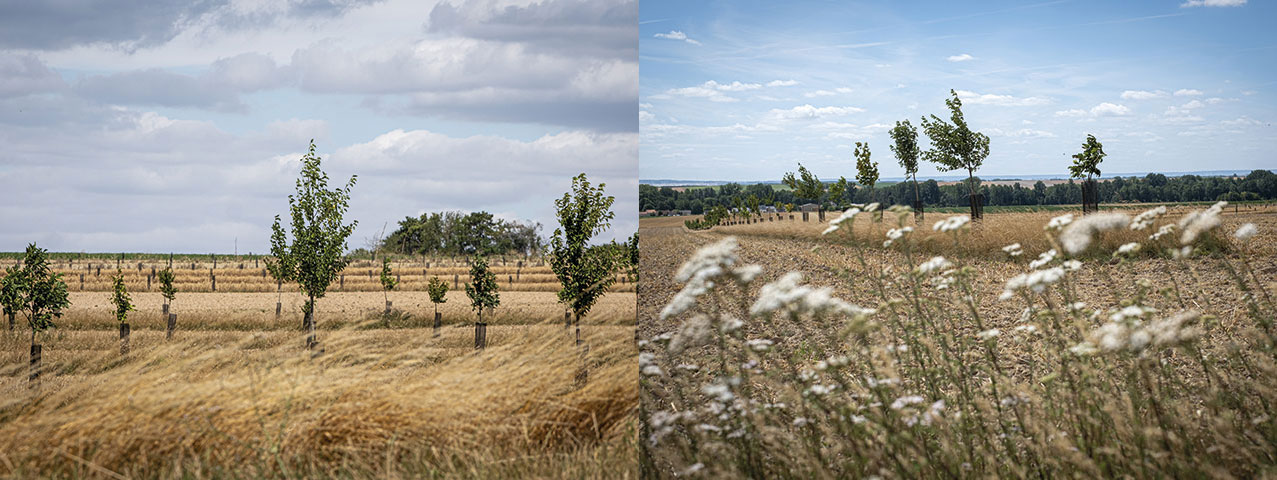
Taking into account and protecting the environment is also a source of enhanced performance for the Group (reputation, internal mobilization, reduction in authorization procedures, enhancement of its assets, etc.). Feedback from Group action plans shows that some sites are going beyond the targets set by the Group. They are adopting proactive approaches aimed at involving and engaging the various stakeholders, such as the biodiversity project for differentiated management implemented at all gas storage sites in France.
The actions carried out at these sites illustrate the wealth and diversity of initiatives that the Group can put in place to preserve and even improve biodiversity locally:




